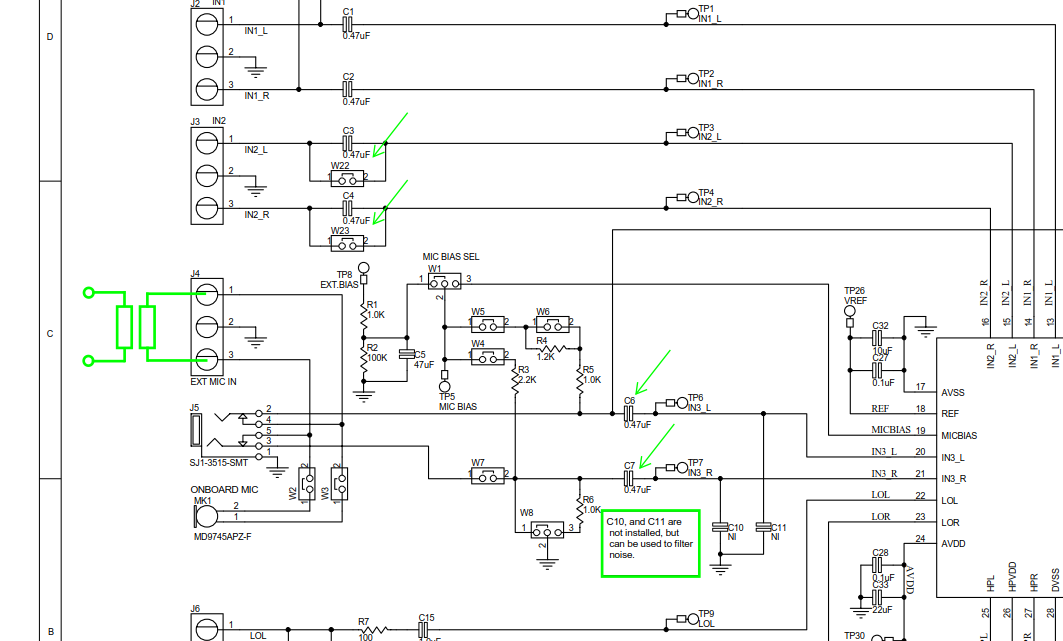Hello,
using the Evaluation Board for the above audio codec, I want to check out the Noise Threshold feature.
When I reduce the input signal, the Noise Threshold flag is set (Page 0, Register 47). When I increase the input signal, the Noise Threshold flag is reset. This works as expected for for noise threshold levels down to -74dB.
When I further reduce the Noise Threshold setting (-76dB, - 78dB, -80dB, ...) the Noise Threshold Flag is never set. Since I assumed that the input signal picks up any distortion, I short circuited the input signals. But the result was the same: Configuring the Noise Threshold to -76dB and lower, the Noise Threshold Flag is never set.
I use IN3L / IN3R in differential mode.
These are my questions:
- Why do Noise Threshold Levels lower than -74dB not work?
- What are the parameters that do influence the Noise Treshold? (e.g. Is there a relation betwenn the Noise Threshold and the Clock, the power supplies, ...)
Here are the settings that I use:
w 30 00 00
w 30 01 01
w 30 00 00
w 30 37 02
w 30 38 02
w 30 00 00
w 30 04 00
w 30 05 11
w 30 06 04
w 30 07 00
w 30 08 00
w 30 19 00
w 30 1A 01
w 30 12 81
w 30 13 82
w 30 14 80
w 30 0B 81
w 30 0C 82
w 30 0D 00
w 30 0E 80
w 30 00 00
w 30 1B 0C
w 30 1C 00
w 30 1D 17
w 30 1E 84
w 30 1F 00
w 30 20 00
w 30 21 10
w 30 00 01
w 30 01 08
w 30 02 A1
w 30 0A 40
w 30 47 32
w 30 7B 01
w 30 00 01
w 30 34 04
w 30 36 04
w 30 37 00
w 30 39 00
w 30 00 00
w 30 51 C0
w 30 52 00
w 30 00 01
w 30 3D 00
w 30 00 00
w 30 3F D4
w 30 40 00
w 30 00 00
w 30 56 F0
w 30 57 6A
w 30 58 46
w 30 59 05
w 30 5A 05
w 30 5B 00
w 30 5C 00
w 30 5E F0
w 30 5F 6A
w 30 60 46
w 30 61 05
w 30 62 05
w 30 63 00
w 30 64 00
w 30 00 01
w 30 0C 08
w 30 0D 10
w 30 00 01
w 30 09 30
#w 30 09 33
w 30 00 00
w 30 53 00
w 30 54 00
w 30 41 D8
w 30 42 00
w 30 00 01
w 30 16 00
w 30 3B 00
w 30 3C 00
w 30 18 00
w 30 19 00
w 30 10 00
w 30 11 00
Best regards
Markus


